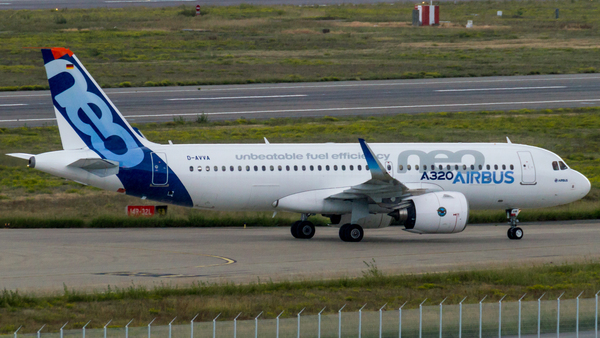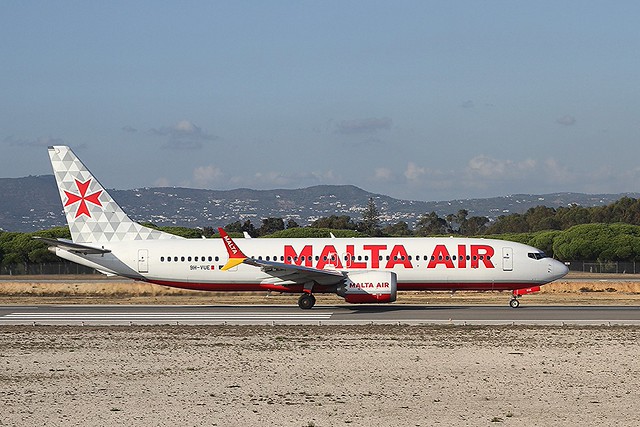LATAM A320 at Asuncion on Oct 27th 2022, storm damage, both engines flamed out, one engine relighted
Last Update: December 17, 2024 / 15:33:20 GMT/Zulu time
Incident Facts
Date of incident
Oct 27, 2022
Classification
Accident
Airline
LATAM Airlines Brasil
Flight number
LA-1325
Departure
Santiago, Chile
Destination
Asuncion, Paraguay
Aircraft Registration
CC-BAZ
Aircraft Type
Airbus A320
ICAO Type Designator
A320
The aircraft remained on the ground in Foz de Iguacu for about 3:20 hours, then departed runway 15 to Asuncion again. On approach to Asuncion's runway 20 the aircraft flew through a thunderstorm and received damage to its radome but continued for a landing on Asuncion's runway 20 about 5 hours after the go around. There were no injuries.
The airline reported the aircraft encountered severe weather on its flight path and performed an emergency landing in Asuncion. Passengers and crew disembarked in good condition.
On Nov 7th 2022 Paraguay's AIB reported the aircraft was left with a disintegrated radome and broken windshields due to multiple impacts caused by a severe storm and hail leading to a forced landing. The occurrence was rated a serious incident (damage and injuries unknown), an investigation has been opened.
In December 2024 Airbus' Safetyfirst Magazine published an article stating that both engines (CFM56) temporarily flamed out causing electric failure, electricity was restored with the APU coming online, seven relight attempts failed with thrust levers in TOGA position until the crew selected the thrust levers to IDLE as per AOM and an APU assisted relight attempt of one engine succeeded. The aircraft landed on single engine. Airbus wrote:
During the night flight, persistent adverse weather remained along their route.
The flight crew requested a northward deviation to avoid storm cells that they detected on their weather radar. The aircraft was cruising at FL 240 with autopilot and autothrust ON when the flight crew executed a 90° left turn toward their final destination.
Severe storm and dual engine flameout
Shortly after the turn, the aircraft encountered severe turbulence and hail. Loud impact noises were heard, and both the left and right windscreen sustained damage. Several ECAM alerts were triggered, including ANTI ICE R WINDSHIELD, ANTI ICE L WINDSHIELD, ENG 1 STALL, NAV RA 2 FAULT.
The autopilot and autothrust disconnected, and within one second, the cockpit went dark. Flight recorder data is not available for the following 2 min and 46 s due to an EMER ELEC configuration. During this time, the thrust levers were moved to TOGA position.
Both engines had flamed out combined with an unreliable airspeed indication. The flight crew switched the APU to ON. When the APU came online, electrical power was restored. The aircraft pitch was 3.5°, corresponding to the pitch provided in the QRH to reach the optimum windmill relight speed. The speed, which was unreliable, was 232 kt indicated on the captain PFD and the aircraft altitude was 18 100 ft 5 900 ft lost from cruise altitude). The aircraft was in ALTERNATE flight control law and thrust levers remained in the TOGA position.
One windmilling relight attempt of ENG 2 was recorded, then the flight crew switched APU BLEED ON and performed several simultaneous attempts (both ENG Master switches ON at the same time) of starter-assisted engine relight with the thrust levers still in the TOGA position. The flight crew eventually set the thrust levers to IDLE and both master levers OFF before performing a successful ENG1 starter-assisted relight with ENG 2 master switch left to the OFF position. The altitude was 9 100 ft, representing a loss of 14 900 ft from the cruise altitude. The flight crew then tried to relight engine #2 twice, but both attempts were unsuccessful.
Safe landing with single engine, unreliable airspeed and ALTERNATE law
The aircraft emerged from the storm and continued to the destination airport. The flight crew performed a safe landing with a single engine operative, ALTERNATE flight control law, unreliable airspeed indication, and significantly damaged windshields impairing visibility.
The aircraft sustained substantial damage.
Airbus analysed:
Unsuccessful weather avoidance
Night conditions and numerous storms in the area made effective weather avoidance challenging. Despite having an automatic radar and performing both automatic and manual scanning, the flight crew entered a severe hailstorm.
Extreme weather conditions
The hailstorm significantly exceeded the engine design and certification criteria. The water/ice content was approximately twice the level for which engines are designed and certied. This explains the observed engine damage and flameout.
Radome damage impact
Radome damage disrupted airflow around the air data probes, causing unreliable airspeed indications and reversion to the ALTERNATE flight control law.
Thrust lever positioning
The thrust levers remained in the TOGA position during seven relight attempts. The ALL ENG FAIL QRH procedure requires setting the thrust levers to IDLE before attempting to relight the engines.
Unsuccessful engine relight attempts
Recorder's data enabled analysis of the sequence of the various engine relight attempts.
The flight crew cycled the ENG 2 master switch OFF then ON 2 s later. They switched the ENG 1 master switch to OFF. APU BLEED was set to ON shortly after. The ENG 1 master switch was then set back to ON 6s after being switched OFF. 10 s later, the ENG 1 master switch was cycled OFF then ON. 25 s later, both ENG 1 and ENG 2 master switches were cycled OFF then ON. The flight crew then cycled ENG 1 master switch again shortly followed by ENG 2 master switch. All relight attempts were unsuccessful. The thrust levers remained in the TOGA position.
These Simultaneous starter-assisted relight attempts failed due to the fact that APU bleed provides sucient air pressure to restart only one engine at a time. It was observed that no ventilation of 30s was performed between each relight attempt.
Successful ENG 1 relight
The crew then set the thrust levers to IDLE and set both engine master switches to OFF. The ENG 1 master switch was set back to ON, while the ENG 2 master switch was briefly set to ON then back to OFF. Within 1 minute and 45 seconds, ENG1 N2 and EGT increased and ENG1 successfully restarted.
The ENG 2 master switch being OFF enabled sufficient bleed pressure to be delivered to ENG 1 starter for a successful relight.
Damaged ENG2
The flight crew then tried two ENG 2 relights, but both attempts remained unsuccessful. Detailed inspection revealed sufficient damage to ENG 2 preventing successful inflight restart.
Significant relight time and altitude loss
ENG 1 became available 8 min 26 s after the all-engine flameout. The aircraft altitude was 9 100 ft, representing a loss of 14 900 ft from the 24 000 ft initial cruise altitude.
Metars Asuncion:
SGAS 270400Z 00000KT 9999 BKN020 21/20 Q1007=
SGAS 270300Z 23004KT 9999 SCT020 22/20 Q1008 RETS=
SGAS 270200Z 05009KT 9999 TS FEW010 OVC020 FEW040CB 22/21 Q1007=
SGAS 270114Z 06005KT 9999 TS FEW010 OVC020 FEW040CB 22/21 Q1007=
SGAS 270100Z 24010G28KT 9999 TS FEW010 OVC020 FEW040CB 23/21 Q1008=
SGAS 270036Z 07015G26KT 9000 -TSRA SCT008 OVC020 FEW040CB 22/21 Q1003=
SGAS 270000Z VRB05KT 8000 -TSRA SCT008 OVC020 FEW040CB 23/21 Q1006=
SGAS 262300Z VRB06KT 7000 TSRA SCT008 OVC020 FEW040CB 22/22 Q1007=
SGAS 262200Z 18017KT 7000 TSRA SCT008 OVC020 FEW040CB 22/22 Q1007=
SGAS 262132Z 21027G38KT 0200 +TSRA SCT008 OVC020 FEW040CB 22/22 Q1006=
SGAS 262122Z 20026G40KT 1500 +TSRA SCT010 OVC020 FEW040CB 24/21 Q1006=
SGAS 262100Z 19030G40KT 5000 TSRA BKN010 OVC027 FEW040CB 26/21 Q1005=
SGAS 262038Z 03009KT 9999 TS SCT027 FEW040CB 33/21 Q1001=
SGAS 262038Z 03009KT 9999 TS SCT027 FEW040CB 33/21 Q1001=
SGAS 262000Z 02010KT 9999 FEW033 34/21 Q1001=
SGAS 261900Z 36016KT 310V020 9999 FEW033 35/20 Q1002=
SGAS 261800Z 01018KT CAVOK 36/21 Q1002=
SGAS 261700Z 36019KT 9999 FEW033 36/20 Q1004=
SGAS 261600Z 02022G32KT 9999 FEW033 35/19 Q1005=
Metars Foz de Iguacu:
SBFI 270400Z 34012KT 9999 -TSRA SCT020 FEW025CB 20/18 Q1012=
SBFI 270300Z 07006KT 9999 VCTS SCT020 FEW025CB 20/18 Q1012=
SBFI 270200Z 16007KT 9999 VCTS SCT020 FEW025CB 20/18 Q1013 RETS=
SBFI 270100Z 18008KT 9999 -TSRA SCT020 FEW025CB 21/18 Q1013 RERA=
SBFI 270021Z 22007KT 9999 -TSRA SCT020 FEW025CB 21/18 Q1013 RERA=
SBFI 270000Z 21013G28KT 5000 TSRA SCT020 FEW025CB 23/18 Q1011=
SBFI 270000Z 21013G28KT 5000 TSRA SCT020 FEW025CB 23/18 Q1011=
SBFI 262346Z 23013G26KT 9999 FEW020 FEW025TCU 25/18 Q1010=
SBFI 262300Z 04004KT 9999 FEW020 29/16 Q1006=
SBFI 262200Z 02007KT 9999 FEW020 31/15 Q1005=
SBFI 262100Z 02009KT 9999 FEW020 32/14 Q1005=
SBFI 262000Z 02012KT 9999 FEW020 34/13 Q1004=
SBFI 261900Z 36014KT CAVOK 34/14 Q1005=
SBFI 261900Z 36014KT CAVOK 34/14 Q1005=
SBFI 261800Z 36014G24KT 9999 FEW020 35/13 Q1006=
SBFI 261700Z 36013KT CAVOK 34/14 Q1007=
SBFI 261600Z 36014KT CAVOK 33/14 Q1008=
Incident Facts
Date of incident
Oct 27, 2022
Classification
Accident
Airline
LATAM Airlines Brasil
Flight number
LA-1325
Departure
Santiago, Chile
Destination
Asuncion, Paraguay
Aircraft Registration
CC-BAZ
Aircraft Type
Airbus A320
ICAO Type Designator
A320
This article is published under license from Avherald.com. © of text by Avherald.com.
Article source
You can read 2 more free articles without a subscription.
Subscribe now and continue reading without any limits!
Read unlimited articles and receive our daily update briefing. Gain better insights into what is happening in commercial aviation safety.
Send tip
Support AeroInside by sending a small tip amount.
Related articles
LATAM A20N at Chapeco on Sep 21st 2025, hail strike and turbulence
A LATAM Brasil Airbus A320-200N, registration PR-XBV performing flight LA-3279 from Chapeco,SC to Sao Paulo Guarulhos,SP (Brazil), was climbing out…
LATAM B788 at Los Angeles on Jul 31st 2025, electronics problems, RAT deployed
A LATAM Boeing 787-8, registration CC-BBI performing flight LA-603 from Los Angeles,CA (USA) to Santiago de Chile (Chile), was climbing out of Los…
LATAM Brasil A321 at Sao Paulo on Jul 29th 2025, rejected takeoff
A LATAM Brasil Airbus A321-200, registration PT-XPN performing flight LA-3676 from Sao Paulo Guarulhos,SP to Recife,PE (Brazil), was accelerating for…
LATAM Brasil A320 at Santiago de Chile on Jun 9th 2025, engine fire during line up
A LATAM Brasil Airbus A320-200, registration PR-MAG performing flight LA-1325 from Santiago (Chile) to Asuncion (Paraguay), was lining up Santiago's…
LATAM Brasil A319 at Chapeco on Mar 31st 2025, overran runway on landing
A LATAM Brasil Airbus A319-100, registration PR-MYM performing flight LA-3276 from Sao Paulo Guarulhos,SP to Chapeco,SC (Brazil) with 107 people on…
Newest articles
Malta B38M at Krakow on Dec 8th 2025, sun visor temporarily shuts engine down
An Air Malta Boeing 737-8 MAX on behalf of Ryanair, registration 9H-VUE performing flight FR-3505 from Krakow (Poland) to Milan Bergamo (Italy), was…
Hokkaido AT42 at Okushiri on Dec 16th 2025, problems with left aileron
A Hokkaido Air System Avions de Transport Regional ATR-42-600 on behalf of JAL Japan Airlines, registration JA13HC performing flight JL-2891 from…
Subscribe today
Are you researching aviation incidents? Get access to AeroInside Insights, unlimited read access and receive the daily newsletter.
Pick your plan and subscribePartner

ELITE Simulation Solutions is a leading global provider of Flight Simulation Training Devices, IFR training software as well as flight controls and related services. Find out more.
SafetyScan Pro provides streamlined access to thousands of aviation accident reports. Tailored for your safety management efforts. Book your demo today
AeroInside Blog
Popular aircraft
Airbus A320Boeing 737-800
Boeing 737-800 MAX
Popular airlines
American AirlinesUnited
Delta
Air Canada
Lufthansa
British Airways






